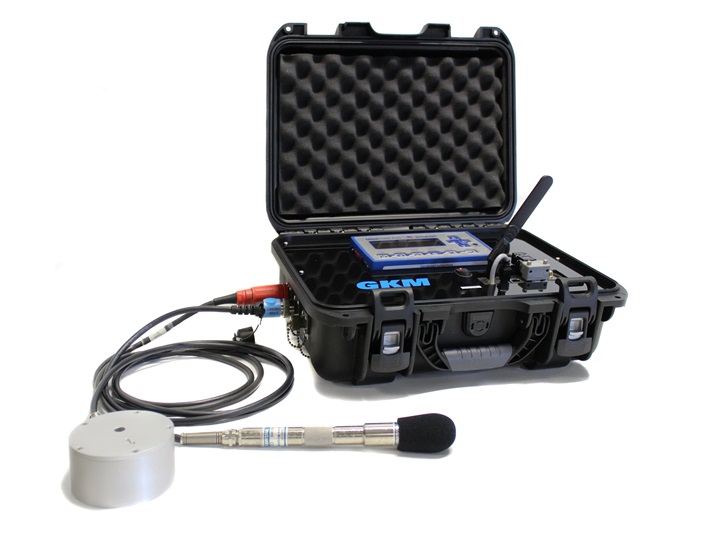Sound and Vibration Monitoring
Sound and Vibration Monitoring
With the tightening of compliance requirements and the aging buildings and infrastructures, construction work such as blasting, trench excavation, tunnel digging, pile driving or drilling can generate large amounts of noise and vibration which must be controlled.
Noise and vibration monitoring allows you to:
- Optimize risk management by avoiding complaints, damage payouts and unplanned work stoppages, enabling better control of costs and schedules;
- Improve protection of vibration-sensitive structures by controlling the vibration they are exposed to;
- Generate detailed documentation to prove compliance with contract requirements or in the event of litigation.
The SVi offers a choice of manual measuring or automated options to suit your needs.
Why use automated monitoring stations ?
Manual measurements may be sufficient for short-term projects or for monitoring a punctual activity. For long-term projects, some hidden costs associated with having to hire a technician (time required for traveling and attending the station, configuration and daily management of data, etc.) are avoided with automated stations. Additionally, they allow the generation of e-mail alarms, simplified data hosting and publishing, as well as better monitoring of trends with automatically updated historical graphs.
How do automated monitoring stations work ?
The stations are designed to continuously record noise and vibration levels. The stations are sturdy, reliable and simple-to-use. The working principle is as follows: The noise or vibration signal is picked up by a microphone or a triaxial geophone connected to a data acquisition system. A cellular modem connects wirelessly the data acquisition system to a central server and allows the recorded data to be uploaded to the server. The server can also send commands to the data acquisition system through the same modem. An analysis module reads the incoming data and can send out alarm e-mails with a short report if a threshold is crossed. The data is then archived and can be downloaded or visualized through a secure web server.
Specifications
Geophone
Measurement range: up to 254 mm/s (10 in/s) Geophones DIN or ISEE
Resolution: 0.00788 mm/s (0.00031 in/s)
Accuracy (ISEE/DIN): ±5 % or 0.5 mm/s (0.02 in/s) whichever is larger, of a flat response between 4 and 125 Hz/DIN 45669 -1
Frequency range 2 to 250 Hz, less than 0 to - 3 dB (ISEE/DIN): of a flat response/1 to 315 Hz
Microphone
Sound level meters: Class I or II
Weighting: A, C, Z
Measurement range: 16 Hz to 20 kHz
Dynamic range: 18 to 143 dB
Response time: Fast: 125 ms Slow: 1 s
Resolution: 0.1 dB





